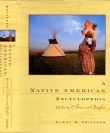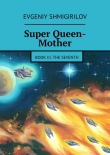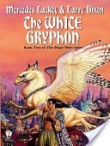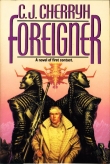
Текст книги "The British Study Edition of the Urantia Papers"
Автор книги: Tigran Aivazian
Жанр:
Религия
сообщить о нарушении
Текущая страница: 101 (всего у книги 295 страниц)
64:7.1 When the coloured descendants of the Sangik family began to multiply, and as they sought opportunity for expansion into adjacent territory, the fifth glacier, the third of geologic count, was well advanced on its southern drift over Europe and Asia. These early coloured races were extraordinarily tested by the rigors and hardships of the glacial age of their origin. This glacier was so extensive in Asia that for thousands of years migration to eastern Asia was cut off. And not until the later retreat of the Mediterranean Sea, consequent upon the elevation of Arabia, was it possible for them to reach Africa.
64:7.2 Thus it was that for almost 100,000 years these Sangik peoples spread out around the foothills and mingled together more or less, notwithstanding the peculiar but natural antipathy which early manifested itself between the different races.
64:7.3 Between the times of the Planetary Prince and Adam, India became the home of the most cosmopolitan population ever to be found on the face of the earth. But it was unfortunate that this mixture came to contain so much of the green, orange, and indigo races. These secondary Sangik peoples found existence more easy and agreeable in the southlands, and many of them subsequently migrated to Africa. The primary Sangik peoples, the superior races, avoided the tropics, the red man going north-east to Asia, closely followed by the yellow man, while the blue race moved north-west into Europe.
64:7.4 The red men early began to migrate to the north-east, on the heels of the retreating ice, passing around the highlands of India and occupying all of north-eastern Asia. They were closely followed by the yellow tribes, who subsequently drove them out of Asia into North America.
64:7.5 When the relatively pure-line remnants of the red race forsook Asia, there were 11 tribes, and they numbered a little over 7,000 men, women, and children. These tribes were accompanied by three small groups of mixed ancestry, the largest of these being a combination of the orange and blue races. These three groups never fully fraternized with the red man and early journeyed southward to Mexico and Central America, where they were later joined by a small group of mixed yellows and reds. These peoples all intermarried and founded a new and amalgamated race, one which was much less warlike than the pure-line red men. Within 5,000 years this amalgamated race broke up into three groups, establishing the civilizations respectively of Mexico, Central America, and South America. The South American offshoot did receive a faint touch of the blood of Adam.
64:7.6 To a certain extent the early red and yellow men mingled in Asia, and the offspring of this union journeyed on to the east and along the southern seacoast and, eventually, were driven by the rapidly increasing yellow race onto the peninsulas and near-by islands of the sea. They are the present-day brown men.
64:7.7 The yellow race has continued to occupy the central regions of eastern Asia. Of all the 6 coloured races they have survived in greatest numbers. While the yellow men now and then engaged in racial war, they did not carry on such incessant and relentless wars of extermination as were waged by the red, green, and orange men. These three races virtually destroyed themselves before they were finally all but annihilated by their enemies of other races.
64:7.8 Since the fifth glacier did not extend so far south in Europe, the way was partially open for these Sangik peoples to migrate to the north-west; and upon the retreat of the ice the blue men, together with a few other small racial groups, migrated westward along the old trails of the Andon tribes. They invaded Europe in successive waves, occupying most of the continent.
64:7.9 In Europe they soon encountered the Neanderthal descendants of their early and common ancestor, Andon. These older European Neanderthalers had been driven south and east by the glacier and thus were in position quickly to encounter and absorb their invading cousins of the Sangik tribes.
64:7.10 In general and to start with, the Sangik tribes were more intelligent than, and in most ways far superior to, the deteriorated descendants of the early Andonic plainsmen; and the mingling of these Sangik tribes with the Neanderthal peoples led to the immediate improvement of the older race. It was this infusion of Sangik blood, more especially that of the blue man, which produced that marked improvement in the Neanderthal peoples exhibited by the successive waves of increasingly intelligent tribes that swept over Europe from the east.
64:7.11 During the following interglacial period this new Neanderthal race extended from England to India. The remnant of the blue race left in the old Persian peninsula later amalgamated with certain others, primarily the yellow; and the resultant blend, subsequently somewhat upstepped by the violet race of Adam, has persisted as the swarthy nomadic tribes of modern Arabs.
64:7.12 ¶ All efforts to identify the Sangik ancestry of modern peoples must take into account the later improvement of the racial strains by the subsequent admixture of Adamic blood.
64:7.13 ¶ The superior races sought the northern or temperate climes, while the orange, green, and indigo races successively gravitated to Africa over the newly elevated land bridge which separated the westward retreating Mediterranean from the Indian Ocean.
64:7.14 The last of the Sangik peoples to migrate from their centre of race origin was the indigo man. About the time the green man was killing off the orange race in Egypt and greatly weakening himself in so doing, the great black exodus started south through Palestine along the coast; and later, when these physically strong indigo peoples overran Egypt, they wiped the green man out of existence by sheer force of numbers. These indigo races absorbed the remnants of the orange man and much of the stock of the green man, and certain of the indigo tribes were considerably improved by this racial amalgamation.
64:7.15 And so it appears that Egypt was first dominated by the orange man, then by the green, followed by the indigo (black) man, and still later by a mongrel race of indigo, blue, and modified green men. But long before Adam arrived, the blue men of Europe and the mixed races of Arabia had driven the indigo race out of Egypt and far south on the African continent.
64:7.16 As the Sangik migrations draw to a close, the green and orange races are gone, the red man holds North America, the yellow man eastern Asia, the blue man Europe, and the indigo race has gravitated to Africa. India harbours a blend of the secondary Sangik races, and the brown man, a blend of the red and yellow, holds the islands off the Asiatic coast. An amalgamated race of rather superior potential occupies the highlands of South America. The purer Andonites live in the extreme northern regions of Europe and in Iceland, Greenland, and north-eastern North America.
64:7.17 ¶ During the periods of farthest glacial advance the westernmost of the Andon tribes came very near being driven into the sea. They lived for years on a narrow southern strip of the present island of England. And it was the tradition of these repeated glacial advances that drove them to take to the sea when the 6th and last glacier finally appeared. They were the first marine adventurers. They built boats and started in search of new lands which they hoped might be free from the terrifying ice invasions. And some of them reached Iceland, others Greenland, but the vast majority perished from hunger and thirst on the open sea.
64:7.18 A little more than 80,000 years ago, shortly after the red man entered north-western North America, the freezing over of the north seas and the advance of local ice fields on Greenland drove these Eskimo descendants of the Urantia aborigines to seek a better land, a new home; and they were successful, safely crossing the narrow straits which then separated Greenland from the north-eastern land masses of North America. They reached the continent about 2,100 years after the red man arrived in Alaska. Subsequently some of the mixed stock of the blue man journeyed westward and amalgamated with the later-day Eskimos, and this union was slightly beneficial to the Eskimo tribes.
64:7.19 About 5,000 years ago a chance meeting occurred between an Indian tribe and a lone Eskimo group on the south-eastern shores of Hudson Bay. These two tribes found it difficult to communicate with each other, but very soon they intermarried with the result that these Eskimos were eventually absorbed by the more numerous red men. And this represents the only contact of the North American red man with any other human stock down to about 1,000 years ago, when the white man first chanced to land on the Atlantic coast.
64:7.20 ¶ The struggles of these early ages were characterized by courage, bravery, and even heroism. And we all regret that so many of those sterling and rugged traits of your early ancestors have been lost to the later-day races. While we appreciate the value of many of the refinements of advancing civilization, we miss the magnificent persistency and superb devotion of your early ancestors, which oftentimes bordered on grandeur and sublimity.
64:7.21 [Presented by a Life Carrier resident on Urantia.]
PAPER № 65
THE OVERCONTROL OF EVOLUTION
Life Carrier
65:0.1 Basic evolutionary material life – premind life – is the formulation of the Master Physical Controllers and the life-impartation ministry of the Seven Master Spirits in conjunction with the active ministration of the ordained Life Carriers. As a result of the co-ordinate function of this threefold creativity there develops organismal physical capacity for mind – material mechanisms for intelligent reaction to external environmental stimuli and, later on, to internal stimuli, influences taking origin in the organismal mind itself.
65:0.2 ¶ There are, then, three distinct levels of life production and evolution:
65:0.3 1. The physical-energy domain – mind-capacity production.
65:0.4 2. The mind ministry of the adjutant spirits – impinging upon spirit capacity.
65:0.5 3. The spirit endowment of mortal mind – culminating in Thought Adjuster bestowal.
65:0.6 ¶ The mechanical-nonteachable levels of organismal environmental response are the domains of the physical controllers. The adjutant mind-spirits activate and regulate the adaptative or nonmechanical-teachable types of mind – those response mechanisms of organisms capable of learning from experience. And as the spirit adjutants thus manipulate mind potentials, so do the Life Carriers exercise considerable discretionary control over the environmental aspects of evolutionary processes right up to the time of the appearance of human will – the ability to know God and the power of choosing to worship him.
65:0.7 It is the integrated functioning of the Life Carriers, the physical controllers, and the spirit adjutants that conditions the course of organic evolution on the inhabited worlds. And this is why evolution – on Urantia or elsewhere – is always purposeful and never accidental.
1. LIFE CARRIER FUNCTIONS65:1.1 The Life Carriers are endowed with potentials of personality metamorphosis which but few orders of creatures possess. These Sons of the local universe are capable of functioning in three diverse phases of being. They ordinarily perform their duties as mid-phase Sons, that being the state of their origin. But a Life Carrier in such a stage of existence could not possibly function in the electrochemical domains as a fabricator of physical energies and material particles into units of living existence.
65:1.2 Life Carriers are able to function and do function on the following three levels:
65:1.3 1. The physical level of electrochemistry.
65:1.4 2. The usual mid-phase of quasi-morontial existence.
65:1.5 3. The advanced semispiritual level.
65:1.6 ¶ When the Life Carriers make ready to engage in life implantation, and after they have selected the sites for such an undertaking, they summon the archangel commission of Life Carrier transmutation. This group consists of ten orders of diverse personalities, including the physical controllers and their associates, and is presided over by the chief of archangels, who acts in this capacity by the mandate of Gabriel and with the permission of the Ancients of Days. When these beings are properly encircuited, they can effect such modifications in the Life Carriers as will enable them immediately to function on the physical levels of electrochemistry.
65:1.7 After the life patterns have been formulated and the material organizations have been duly completed, the supermaterial forces concerned in life propagation become forthwith active, and life is existent. Whereupon the Life Carriers are immediately returned to their normal mid-phase of personality existence, in which estate they can manipulate the living units and maneuver the evolving organisms, even though they are shorn of all ability to organize – create – new patterns of living matter.
65:1.8 After organic evolution has run a certain course and free will of the human type has appeared in the highest evolving organisms, the Life Carriers must either leave the planet or take renunciation vows; that is, they must pledge themselves to refrain from all attempts further to influence the course of organic evolution. And when such vows are voluntarily taken by those Life Carriers who choose to remain on the planet as future advisers to those who shall be intrusted with the fostering of the newly evolved will creatures, there is summoned a commission of 12, presided over by the chief of the Evening Stars, acting by authority of the System Sovereign and with permission of Gabriel; and forthwith these Life Carriers are transmuted to the third phase of personality existence – the semispiritual level of being. And I have functioned on Urantia in this third phase of existence ever since the times of Andon and Fonta.
65:1.9 We look forward to a time when the universe may be settled in light and life, to a possible fourth stage of being wherein we shall be wholly spiritual, but it has never been revealed to us by what technique we may attain this desirable and advanced estate.
2. THE EVOLUTIONARY PANORAMA65:2.1 The story of man’s ascent from seaweed to the lordship of earthly creation is indeed a romance of biologic struggle and mind survival. Man’s primordial ancestors were literally the slime and ooze of the ocean bed in the sluggish and warm-water bays and lagoons of the vast shore lines of the ancient inland seas, those very waters in which the Life Carriers established the three independent life implantations on Urantia.
65:2.2 Very few species of the early types of marine vegetation that participated in those epochal changes which resulted in the animallike borderland organisms are in existence today. The sponges are the survivors of one of these early midway types, those organisms through which the gradual transition from the vegetable to the animal took place. These early transition forms, while not identical with modern sponges, were much like them; they were true borderline organisms – neither vegetable nor animal – but they eventually led to the development of the true animal forms of life.
65:2.3 The bacteria, simple vegetable organisms of a very primitive nature, are very little changed from the early dawn of life; they even exhibit a degree of retrogression in their parasitic behaviour. Many of the fungi also represent a retrograde movement in evolution, being plants which have lost their chlorophyll-making ability and have become more or less parasitic. The majority of disease-causing bacteria and their auxiliary virus bodies really belong to this group of renegade parasitic fungi. During the intervening ages all of the vast kingdom of plant life has evolved from ancestors from which the bacteria have also descended.
65:2.4 The higher protozoan type of animal life soon appeared, and appeared suddenly. And from these far-distant times the amoeba, the typical single-celled animal organism, has come on down but little modified. He disports himself today much as he did when he was the last and greatest achievement in life evolution. This minute creature and his protozoan cousins are to the animal creation what bacteria are to the plant kingdom; they represent the survival of the first early evolutionary steps in life differentiation together with failure of subsequent development.
65:2.5 Before long the early single-celled animal types associated themselves in communities, first on the plan of the Volvox and presently along the lines of the Hydra and jellyfish. Still later there evolved the starfish, stone lilies, sea urchins, sea cucumbers, centipedes, insects, spiders, crustaceans, and the closely related groups of earthworms and leeches, soon followed by the molluscs – the oyster, octopus, and snail. Hundreds upon hundreds of species intervened and perished; mention is made only of those which survived the long, long struggle. Such nonprogressive specimens, together with the later appearing fish family, today represent the stationary types of early and lower animals, branches of the tree of life which failed to progress.
65:2.6 ¶ The stage was thus set for the appearance of the first backboned animals, the fishes. From this fish family there sprang two unique modifications, the frog and the salamander. And it was the frog which began that series of progressive differentiations in animal life that finally culminated in man himself.
65:2.7 The frog is one of the earliest of surviving human-race ancestors, but it also failed to progress, persisting today much as in those remote times. The frog is the only species ancestor of the early dawn races now living on the face of the earth. The human race has no surviving ancestry between the frog and the Eskimo.
65:2.8 ¶ The frogs gave rise to the Reptilia, a great animal family which is virtually extinct, but which, before passing out of existence, gave origin to the whole bird family and the numerous orders of mammals.
65:2.9 Probably the greatest single leap of all prehuman evolution was executed when the reptile became a bird. The bird types of today – eagles, ducks, pigeons, and ostriches – all descended from the enormous reptiles of long, long ago.
65:2.10 The kingdom of reptiles, descended from the frog family, is today represented by four surviving divisions: two nonprogressive, snakes and lizards, together with their cousins, alligators and turtles; one partially progressive, the bird family, and the fourth, the ancestors of mammals and the direct line of descent of the human species. But though long departed, the massiveness of the passing Reptilia found echo in the elephant and mastodon, while their peculiar forms were perpetuated in the leaping kangaroos.
65:2.11 ¶ Only 14 phyla have appeared on Urantia, the fishes being the last, and no new classes have developed since birds and mammals.
65:2.12 ¶ It was from an agile little reptilian dinosaur of carnivorous habits but having a comparatively large brain that the placental mammals suddenly sprang. These mammals developed rapidly and in many different ways, not only giving rise to the common modern varieties but also evolving into marine types, such as whales and seals, and into air navigators like the bat family.
65:2.13 Man thus evolved from the higher mammals derived principally from the western implantation of life in the ancient east-west sheltered seas. The eastern and central groups of living organisms were early progressing favourably toward the attainment of prehuman levels of animal existence. But as the ages passed, the eastern focus of life emplacement failed to attain a satisfactory level of intelligent prehuman status, having suffered such repeated and irretrievable losses of its highest types of germ plasm that it was forever shorn of the power to rehabilitate human potentialities.
65:2.14 Since the quality of the mind capacity for development in this eastern group was so definitely inferior to that of the other two groups, the Life Carriers, with the consent of their superiors, so manipulated the environment as further to circumscribe these inferior prehuman strains of evolving life. To all outward appearances the elimination of these inferior groups of creatures was accidental, but in reality it was altogether purposeful.
65:2.15 Later in the evolutionary unfolding of intelligence, the lemur ancestors of the human species were far more advanced in North America than in other regions; and they were therefore led to migrate from the arena of western life implantation over the Bering land bridge and down the coast to south-western Asia, where they continued to evolve and to benefit by the addition of certain strains of the central life group. Man thus evolved out of certain western and central life strains but in the central to near-eastern regions.
65:2.16 In this way the life that was planted on Urantia evolved until the ice age, when man himself first appeared and began his eventful planetary career. And this appearance of primitive man on earth during the ice age was not just an accident; it was by design. The rigors and climatic severity of the glacial era were in every way adapted to the purpose of fostering the production of a hardy type of human being with tremendous survival endowment.








